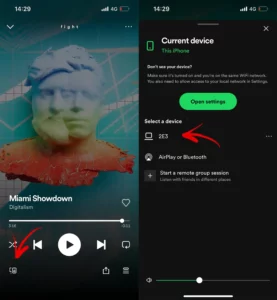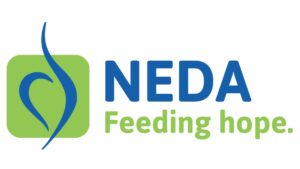With our OLAP vs OLTP comparison article, we will explain about transaction processing methods. Although visually almost identical, the two words really describe whole separate sets of systems. Processing, storing and analyzing transaction data are all done online in real-time via online transaction processing (OLTP). Complex queries are used in online analytical processing (OLAP) to examine compiled historical data from online transaction processing (OLTP) databases. Are you confused?
Both online analytical processing (OLAP) and online transaction processing (OLTP) are foundational processing technologies used to address complex data issues in the data analytics domain. Therefore, it is to your best advantage to eliminate the confusion. The solution is simple; keep reading…
OLAP vs OLTP: Why are they important?
Within the data science industry, there are two types of data processing systems: online analytical processing (OLAP) and online transaction processing (OLTP). The major distinction is that one uses data to gain important insights, while the other is just operational. However, there are relevant methods to employ both systems to tackle data challenges.

In today’s digital age, businesses that can use data to make better decisions and adjust to customers’ ever-evolving demands will thrive. These datasets are at work in both cutting-edge service delivery mechanisms (like ridesharing apps) and industry-standard back-end systems that support the retail sector (both e-commerce and in-store transactions).
The two systems’ primary roles are:
- Data from transactions is gathered, stored, and processed instantly by OLTP.
- Data from OLTP systems is sent to OLAP, where it is analyzed via queries.
The challenge is not which sort of processing to use, but rather how to combine the two to achieve your goals. But first, you should clearly understand what they are and what are the differences between OLAP and OLTP.
What is OLAP?
The term “online analytical processing” (OLAP) refers to a technology that allows for rapid, multidimensional examination of massive datasets. This information is typically retrieved from a centralized database such as a data warehouse, data mart, or similar repository. In addition to financial analysis, budgeting, and sales forecasting, OLAP excels at data mining, business intelligence, and complicated analytical computations for use in corporate reporting.
For data mining, analytics, and business intelligence purposes, OLAP aggregates historical data from OLTP databases and other sources and processes complicated queries against it. The speed with which these intricate queries are answered is a primary concern in OLAP. Depending on the specifics of the query, numerous rows of data may be aggregated into a single column. Financial results from one year to the next or patterns in the number of leads generated by advertising campaigns are two good examples.
Analysts and decision-makers can use specialized reporting applications with access to raw data from OLAP databases and data warehouses. A failed OLAP query will not prevent or delay consumer transactions from being processed, but it may slow down or affect the accuracy of business intelligence insights.
The OLAP cube is the backbone of many OLAP databases and is used for the fast querying, reporting, and analysis of multidimensional data. What is the definition of a data dimension? This is just a single data point in some larger collections. For instance, revenue data may be disaggregated by a number of factors, including geography, season, product line, and more.
The OLAP cube is a multi-layered extension of the row-and-column structure of a standard relational database. Data analysts can “drill down” into layers for sales by state/province, city, and/or individual retailers, for example, even if sales are organized at the regional level on the top layer of the cube. Most commonly, a star schema or snowflake design is used to store this type of historical, aggregated data for OLAP purposes.
OLAP stands for…
If you missed it, let’s highlight it again; OLAP stands for online analytical processing in the data science lingo.
Here are some examples of where OLAP is useful:
- Spotify users can access a custom homepage featuring their favorite songs and playlists based on an analysis of their listening habits.
- Movie suggestions from Netflix’s database.

What is OLTP?
The term “online transactional processing” (OLTP) refers to the real-time execution of many database transactions by many users, generally over the Internet. OLTP systems power everything from automated teller machine withdrawals to online hotel bookings in today’s world. Non-financial transactions like resetting passwords or sending texts can be driven by OLTP as well.
Data from transactions is stored in databases that are part of the OLTP system. Each purchase is documented in its own database entry. Daily business transactions are managed by OLTP systems in companies. It works with 3-tier applications to allow for transactional functionality.
Due to the frequent reading, writing, and updating of databases, OLTP places a premium on processing transaction speeds. Through the use of in-place system logic, it also ensures that data will remain unchanged in the event of a failed transaction.
With the use of a relational database, OLTP systems are able to:
- Perform a huge number of straightforward operations, typically including data insertions, updates, and removals.
- Allow multiple users to view the same data without compromising security.
- Help to process speeds into the millisecond range.
- Help users quickly find what they’re looking for by indexing relevant data sets for easy queries.
- Maintain continuous availability and incremental backups at all times.
OLTP full form
In case you missed it the first time around, here it is again; OLTP full form is online transactional processing.
OLTP serves the following purposes:
- The ATM network’s management system is an online transaction processing program.
- Data transactions with ACID characteristics are handled by OLTP behind the scenes.
- Also, you may use it to send a text message, add a book to your shopping basket, do your banking, and book a flight online.

The majority of OLAP databases get their input data from OLTP systems. Therefore, in today’s data-driven society, a hybrid approach utilizing both OLTP and OLAP is required. But, what are the differences?
OLAP vs OLTP: Differences
OLAP vs OLTP comparison time has come. Their names, analytical and transactional, give away the primary difference between the two types of systems. All systems have been fine-tuned to perform their designated tasks at their highest efficiency.
For more informed judgments, OLAP is ideal because of how well it handles complicated data processing. Business intelligence (BI), data mining, and other decision support applications can all benefit from the use of OLAP systems, which are tailored to the needs of data scientists, business analysts, and knowledge workers.
On the other hand, online transaction processing (OLTP) is designed to handle a large volume of transactions with ease. When it comes to customer service, OLTP systems are what you need, whether it’s for frontline employees (such as cashiers, bank tellers, and hotel front desk clerks) or for self-service applications (e.g., online banking, e-commerce, travel reservations).
Do you want more information about the differences? Let’s take a closer look at the side-by-side comparison of OLAP vs OLTP:
| OLTP | OLAP | |
| Characteristics | Able to process a high volume of minor transactions | Processes massive datasets and intricate queries |
| Query types | Simple standardized queries | Complex queries |
| Operations | Based on INSERT, UPDATE, DELETE commands | Using SELECT commands for data aggregation and report generation. |
| Response time | Milliseconds | How long it takes to process data might range from seconds to hours. |
| Design | Industry-specific, such as retail, manufacturing, or banking | Subject-specific, such as sales, inventory, or marketing |
| Source | Transactions | Aggregated data from transactions |
| Purpose | Real-time management and operation of core business processes. | Strategize, address issues, provide backing for choices, and discover previously unseen insights |
| Data updates | User-initiated, brief, and often updated | Scheduled, long-running batch jobs ensure that the data is always up to date. |
| Space requirements | Typically minimal if past information is stored. | In most cases, their size results from the inclusion of numerous smaller datasets. |
| Backup and recovery | Consistent back-ups are necessary for business continuity and compliance with regulatory and governance standards. | In the absence of regular backups, the OLTP database can be used to reload any lost data. |
| Productivity | Increases productivity of end users | Boosts efficiency in the workplace, benefiting executives, data analysts, and other managers |
| Data view | Lists day-to-day business transactions | Multi-dimensional view of enterprise data |
| User examples | Customer-facing personnel, clerks, online shoppers | Knowledge workers such as data analysts, business analysts, and executives |
| Database design | Normalized databases for efficiency | Denormalized databases for analysis |
While online transaction processing (OLTP) keeps track of recent business activity in real-time, online analytical processing (OLAP) uses that information to develop and verify insights. Insights developed with OLAP are only as excellent as the data stream from which they originate, but that historical perspective enables precise forecasting.
OLAP vs OLTP: Examples
Let’s look at some seniors to better understand the differences:
OLAP vs OLTP in data warehouse
A vast amount of data is typical of OLAP, while numerous short transactions are typical of OLTP. While typical database management systems (DBMS) are used in OLTP, an ad hoc data warehouse is built for OLAP in order to combine data from several sources into a single repository.
OLAP vs OLTP in data mining
Despite their superficial similarity, the two words designate entirely distinct categories of computer programs. Data from transactions is recorded, stored, and processed online in real-time using online transaction processing (OLTP). Complex queries are used in online analytical processing (OLAP) to examine large amounts of historical data compiled from operational database management systems.
Business reporting tasks including financial analysis, budgeting, and sales forecasting, as well as data mining, business intelligence, and complicated analytical computations, all benefit greatly from OLAP.

Conclusion
Simply said, OLTP is superior for handling routine operations. When it comes to analyzing data that has been collected and kept in the past, however, OLAP is far and away the superior choice. In contrast to the online transaction processing (OLTP) system, the online analytical processing (OLAP) system gets data from the past in several dimensions and analyzes it to aid in decision-making.
Which one is ultimately better? The answer is depending on the needs of the user.
We hope our OLAP vs OLTP comparison will be helpful to find the answer.
- SEO Powered Content & PR Distribution. Get Amplified Today.
- Platoblockchain. Web3 Metaverse Intelligence. Knowledge Amplified. Access Here.
- Source: https://dataconomy.com/2023/01/olap-vs-oltp-examples-differences2023/
- 1
- 10
- 7
- a
- Able
- About
- access
- accuracy
- Achieve
- activity
- Ad
- addition
- address
- ADvantage
- Advertising
- affect
- against
- aggregation
- Aid
- algorithms
- All
- allows
- Although
- always
- amount
- amounts
- analysis
- Analysts
- Analytical
- analytics
- analyze
- analyzes
- analyzing
- and
- answer
- applications
- approach
- apps
- around
- article
- ATM
- Automated
- availability
- Back-end
- Backbone
- backing
- backups
- Bank
- Banking
- based
- basket
- because
- behind
- behind the scenes
- being
- benefit
- BEST
- Better
- between
- book
- bookings
- budgeting
- built
- business
- business continuity
- business intelligence
- business processes
- businesses
- Campaigns
- case
- cases
- categories
- centralized
- challenge
- challenges
- characteristics
- choice
- choices
- City
- class
- clearly
- closer
- collections
- Column
- COM
- combine
- come
- commonly
- Companies
- comparison
- complex
- compliance
- complicated
- compromising
- computations
- computer
- Concern
- conclusion
- confused
- confusion
- consumer
- continuous
- contrast
- Core
- Corporate
- custom
- customer
- Customer Service
- cutting-edge
- daily
- data
- Data Analytics
- data entry
- data mining
- data processing
- data science
- data sets
- data warehouse
- data warehouses
- data-driven
- Database
- databases
- datasets
- Date
- decision
- Decision Making
- decision-makers
- decisions
- delay
- delivery
- demands
- Depending
- describe
- Design
- designed
- develop
- developed
- difference
- differences
- digital
- Dimension
- dimensions
- discover
- discovering
- distinct
- domain
- down
- driven
- e-commerce
- each
- easily
- efficiency
- eliminate
- employees
- enables
- ensure
- ensures
- Enterprise
- entirely
- entry
- Ether (ETH)
- Even
- Event
- everything
- example
- examples
- excellent
- execution
- executives
- Explain
- extension
- extract
- facilitate
- factors
- Failed
- FAST
- Favorite
- Featuring
- field
- financial
- Find
- First
- first time
- flight
- following
- form
- frequent
- from
- front
- full
- functionality
- Gain
- generally
- generated
- generation
- geography
- get
- Give
- Goals
- good
- governance
- greatly
- handle
- Handles
- Handling
- helpful
- here
- High
- highest
- Highlight
- historical
- homepage
- hope
- hotel
- HOURS
- How
- How To
- However
- HTTPS
- huge
- Hybrid
- ideal
- identical
- important
- in
- Including
- inclusion
- individual
- industry
- information
- informed
- input
- insights
- instance
- Intelligence
- Internet
- inventory
- issues
- IT
- Jobs
- judgments
- Keep
- knowledge
- large
- larger
- layer
- layers
- Leads
- LEARN
- learning
- Level
- Line
- Listening
- Long
- Look
- looking
- machine
- machine learning
- major
- Majority
- make
- manage
- managed
- management
- management system
- manufacturing
- many
- massive
- message
- methods
- might
- millisecond
- minimal
- Mining
- minor
- more
- most
- multi-layered
- multiple
- names
- necessary
- Need
- needs
- Netflix
- next
- number
- numerous
- ONE
- online
- online banking
- operation
- operational
- Operations
- order
- Organized
- Other
- own
- part
- Passwords
- past
- patterns
- perform
- Personnel
- perspective
- Places
- plato
- Plato Data Intelligence
- PlatoData
- Point
- power
- Premium
- prevent
- previously
- primary
- process
- processes
- processing
- Product
- productivity
- Program
- Programs
- provide
- purchase
- purposes
- quickly
- range
- rapid
- Raw
- raw data
- Reading
- real-time
- recent
- recorded
- refers
- regional
- regular
- regulatory
- Relationships
- relevant
- remain
- report
- Reporting
- repository
- required
- Results
- retail
- retailers
- revenue
- roles
- Said
- sales
- same
- scenes
- Science
- scientists
- Season
- seconds
- sector
- security
- Self-service
- sending
- seniors
- serves
- service
- Sets
- several
- Shopping
- Short
- should
- similar
- Simple
- single
- Size
- slow
- smaller
- Society
- Software
- solution
- some
- Sources
- specialized
- speed
- speeds
- standard
- standards
- stands
- Star
- statistics
- store
- stored
- straightforward
- stream
- structure
- structured
- structured and unstructured data
- such
- superior
- support
- system
- Systems
- tailored
- Take
- takes
- tasks
- techniques
- Technologies
- Technology
- The
- their
- therefore
- Thrive
- Through
- time
- times
- to
- today’s
- top
- track
- transaction
- transaction speeds
- transactional
- Transactions
- travel
- types
- typical
- typically
- Ultimately
- understand
- Update
- Updates
- updating
- use
- User
- users
- Utilizing
- Vast
- verify
- via
- View
- volume
- Warehouse
- What
- What is
- whether
- which
- while
- will
- Withdrawals
- without
- words
- Work
- workers
- Workplace
- works
- world
- would
- writing
- year
- Your
- zephyrnet












